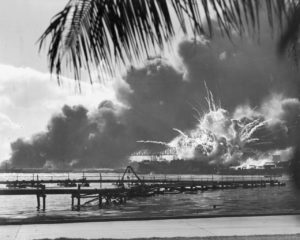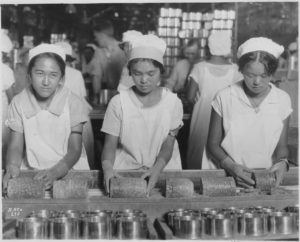In 1900, Hawai’i was granted self-governance and retained ʻIolani Palace as the territorial capitol building.

Despite several attempts to become a state, Hawai’i remained a territory for 60 years. Plantation owners and capitalists, who maintained control through financial institutions such as the Big Five, found territorial status convenient because they remained able to import cheap, foreign labor. S Such immigration and labor practices were prohibited in many states.
Puerto Rican immigration to Hawai’i began in 1899, when Puerto Rico’s sugar industry was devastated by two hurricanes, causing a worldwide shortage of sugar and a huge demand for sugar from Hawai’i. Hawai’ian sugarcane plantation owners began to recruit experienced, unemployed laborers in Puerto Rico. Two waves of Korean immigration to Hawai’i occurred in the 20th century. The first wave arrived between 1903 and 1924; the second wave began in 1965 after President Lyndon B. Johnson signed the Immigration and Nationality Act of 1965, which removed racial and national barriers and resulted in significantly altering the demographic mix in the U.S.
Oʻahu was the target of a surprise attack on Pearl Harbor by Imperial Japan on December 7, 1941. The attack on Pearl Harbor and other military and naval installations, carried out by aircraft and by midget submarines, brought the United States into World War II.

Political Changes of 1954 – State of Hawai’i (1959–Present):
In the 1950s, the power of the plantation owners was broken by the descendants of immigrant laborers, who were born in Hawai’i and were U.S. citizens.

They voted against the Hawai’i Republican Party, strongly supported by plantation owners. The new majority voted for the Democratic Party of Hawai’i, which dominated territorial and state politics for more than 40 years. Eager to gain full representation in Congress and the Electoral College, residents actively campaigned for statehood. In Washington there was talk that Hawai’i would be a Republican Party stronghold so it was matched with the admission of Alaska, seen as a Democratic Party stronghold. These predictions turned out to be inaccurate; today, Hawai’i votes Democratic predominantly, while Alaska votes Republican.
In March 1959, Congress passed the Hawai’i Admission Act, which U.S. President Dwight D. Eisenhower signed into law. The act excluded Palmyra Atoll from statehood; it had been part of the Kingdom and Territory of Hawai’i. On June 27, 1959, a referendum asked residents of Hawai’i to vote on the statehood bill; 94.3% voted in favor of statehood and 5.7% opposed it. The referendum asked voters to choose between accepting the Act and remaining a U.S. territory. The United Nations’ Special Committee on Decolonization later removed Hawai’i from its list of non-self-governing territories.
After attaining statehood, Hawai’i quickly modernized through construction and a rapidly growing tourism economy. Later, state programs promoted Hawai’ian culture. The Hawai’i State Constitutional Convention of 1978 created institutions such as the Office of Hawai’ian Affairs to promote indigenous language and culture.
Economy:
The history of Hawai’i’s economy can be traced through a succession of dominant industries; sandalwood, whaling, sugarcane, pineapple, the military, tourism and education. Since statehood in 1959, tourism has been the largest industry, contributing 24.3% of the gross state product (GSP) in 1997, despite efforts to diversify. Hawai’ian exports include food and clothing. These industries play a small role in the Hawai’ian economy, due to the shipping distance to viable markets, such as the West Coast of the contiguous U.S. The state’s food exports include coffee, macadamia nuts, pineapple, livestock, sugarcane and honey.
